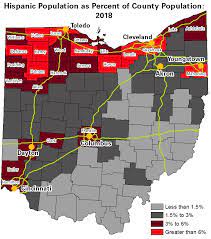
A rancher in Santa Cruz, Arizona has been charged with the murder of Gabriel Cuen-Buitimea, a migrant who was crossing across his land after his group was scattered by Border Patrol. Cuen-Buitimea was unarmed and shot in the back. George Kelly has pled not guilty to second-degree murder, but his arrest has sparked outrage and people across the United States have raised over $425,000 for Kelly’s defense. Kelly’s lawyer, Brenna Larkin, paints a very different picture of the crime than Sheriff David Hathaway, other law enforcement officials, and witnesses, saying that Kelly heard gunfire first, and that Cuen-Buitimea may have been shot in a gang conflict. Kelly has posted a $1 million bond and is set to face trial in September.
The author’s message is centered around contrasting the two nearly opposite narratives that have arisen in this area, a “sense of peril on both sides” (Healy 2023). One being Mr. Kelly’s narrative and that of some other ranchers, that the area is overrun with crime from illegal immigrants crossing the border, where one must carry an AK-47 with them to protect themselves and their families. Another, presented by the Sheriff and law enforcement, which finds that the rural area near the border is “peaceful and tranquil,” where migrants are much more likely to die from exposure or violence themselves than to hurt anyone else. The journalist, Jack Healy, humanizes Gabriel Cuen-Buitimea, contrasting Larkin’s claims that he was a human and drug smuggler, by describing where he lived with his two daughters and his work as an onion farmer. Healy contrasts the largely unfounded fear of the ranchers with the very real life-and-death consequences for migrants crossing the border.
The quantitative evidence in this article is very helpful in that it cuts through the narrative of an area “invaded” by violent illegal immigrants who are smuggling drugs and humans. In reality, the 55,000-person county generally encounters only one or two homicides a year. Additionally, Healy includes the fact that at least 894 migrants died along the entire southern border the last fiscal year, which as a 58% increase from the year before. The data provided comes from local law enforcement as well as the U.S. Border Patrol Missing Migrants Program. It is presented accurately and with the proper context. The article could have included more quantitative evidence regarding immigration as a whole, but the information included is strong enough to stand on its own.
The author’s use of qualitative evidence is very interesting, as it almost contrasts the quantitative evidence provided. He includes interviews in which one rancher says, “The border is out of control, everybody’s just sick of it. When you think your life’s threatened and your wife- everybody has a certain point where enough is enough.” This same rancher has found 16 bodies on his property. These interviews, along with descriptions of Kelly’s self-published novel about a “war zone” ranch and his call to 911 where he referred to Cuen-Buitimea’s body as “an animal laying face down,” demonstrate the general local attitude toward migrants and how it leads to situations in which people like Gabriel lose their lives (Healy 2023). The author’s use of qualitative evidence allowed the prejudice of some of these ranchers speak for themselves, but he could have included interviews with those who disagree or more information about Cuen-Buitimea.
John Healy did an excellent job of allowing the audience themselves to draw a connection between the ranchers’ fears of immigrants and the reality of the violence that migrants face. His evidence shows that these inaccurate fears have real, fatal consequences, and not for the ranchers. This relates to a major theme early in our course that false information and biases surrounding certain minority groups are dangerous, whether it be anti-immigrant legislation, Border Patrol practices, or the actions of individuals. Additionally, statistics, although they can be used maliciously, are helpful in combatting false narratives around immigration. The use of quantitative and qualitative data in this article reveal the truth of immigration across the southern border, counteracts the injustice of the misinformation spread about Gabriel Cuen-Buitimea and others like him.
Source
Healy, Jack. “Death and Justice on the Border: A Migrant Is Killed, a Rancher Is Charged.” The New York Times. The New York Times, April 3, 2023. https://www.nytimes.com/2023/04/03/us/arizona-rancher-migrant-death.html.
